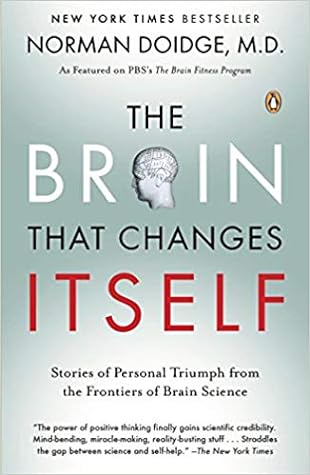More on this book
Community
Kindle Notes & Highlights
Read between
September 5, 2017 - May 29, 2018
They showed that the brain changed its very structure with each different activity it performed, perfecting its circuits so it was better suited to the task at hand.
They showed that children are not always stuck with the mental abilities they are born with; that the damaged brain can often reorganize itself so that when one part fails, another can often substitute; that if brain cells die, they can at times be replaced; that many “circuits” and even basic reflexes that we think are hardwired are not.
I saw people rewire their brains with their thoughts, to cure previously incurable obsessions and traumas.
“because if I don’t laugh I will cry.”
“I have to emphasize why this is a miracle,” says Yuri, who considers himself a data-driven skeptic. “She has almost no natural sensors. For the past twenty minutes we provided her with an artificial sensor. But the real miracle is what is happening now that we have removed the device, and she doesn’t have either an artificial or a natural vestibular apparatus. We are awakening some kind of force inside her.”
“We see with our brains, not with our eyes,” he says.
“I was feeling revulsion, but I could also see Mary Jane’s excitement, because what the slides showed was that my father had had a huge lesion from his stroke and that it had never healed, even though he recovered all those functions. I freaked out. I got numb. I was thinking, ‘Look at all this damage he has.’ And she said, ‘How can you recover with all this damage?’”
When the world champion Garry Kasparov played against the prime minister and leaders of the cabinet, he beat all of them except Sharansky.
Everything your “immaterial” mind imagines leaves material traces. Each thought alters the physical state of your brain synapses at a microscopic level. Each time you imagine moving your fingers across the keys to play the piano, you alter the tendrils in your living brain.
As Freud discovered, recurring dreams, with a relatively unchanging structure, often contain memory fragments of early traumas.
This theory, that novel environments may trigger neurogenesis, is consistent with Merzenich’s discovery that in order to keep the brain fit, we must learn something new, rather than simply replaying already-mastered skills.
and we have many studies confirming that humans who lead mentally active lives have better brain function.


